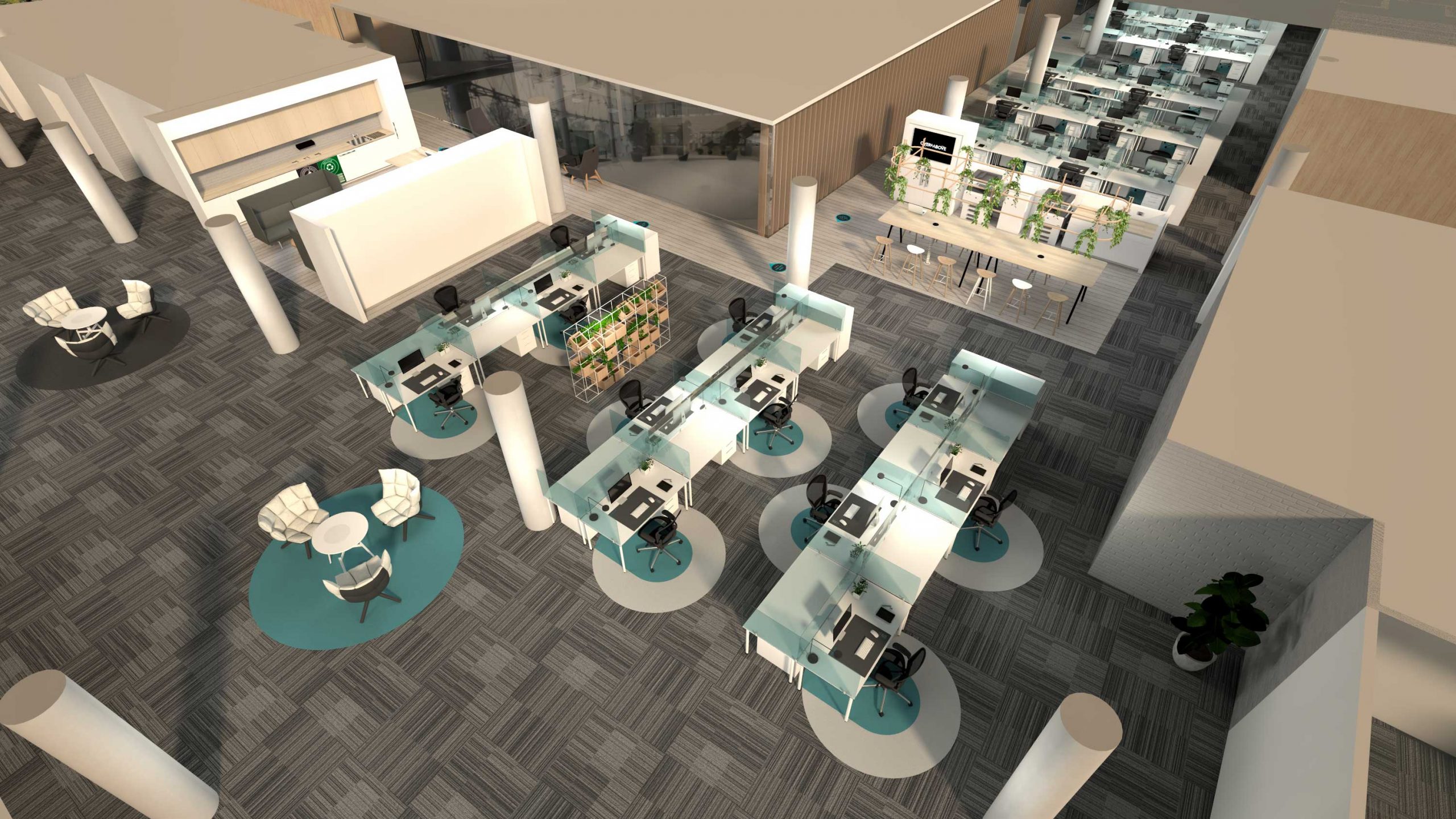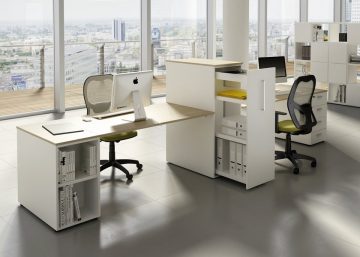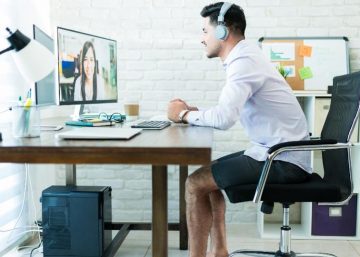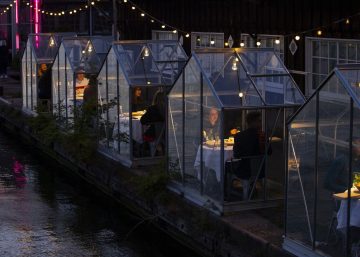COVID-19 has upended working life, changing how and where people do their jobs and very likely how the layout of offices in the future will be created.
Twitter and Facebook have both announced they are giving employees the opportunity to work from home permanently. But not all companies are able to do so – and with governments across the globe starting to ease lockdowns, minimizing virus transmission at work is top of many organizations’ agendas.
How will office layouts need to change in the future?
Here are 10 ways that work and workplaces could change due to covid-19.
1. Augmented reality workstations
Facebook has been experimenting with futuristic desk set-ups, where virtual screens float in the air and people can resize them.
Its head of virtual reality and augmented reality, Andrew Bosworth, revealed footage of a mixed reality workspace on Twitter.
He said the social network wants to “supercharge remote work” – and has been working on enabling people to “switch between real and virtual worlds”.
In a blog post, Facebook said the technology is part of a new computing platform that would combine augmented and virtual reality with new devices to create “infinite workspaces” that could allow co-workers to collaborate in virtual meeting rooms.
And they’re working on Codec Avatars – lifelike virtual avatars of employees – to enhance social interaction, “helping social connections in VR become as natural and familiar as those in the real world”.
2. The socially distanced office
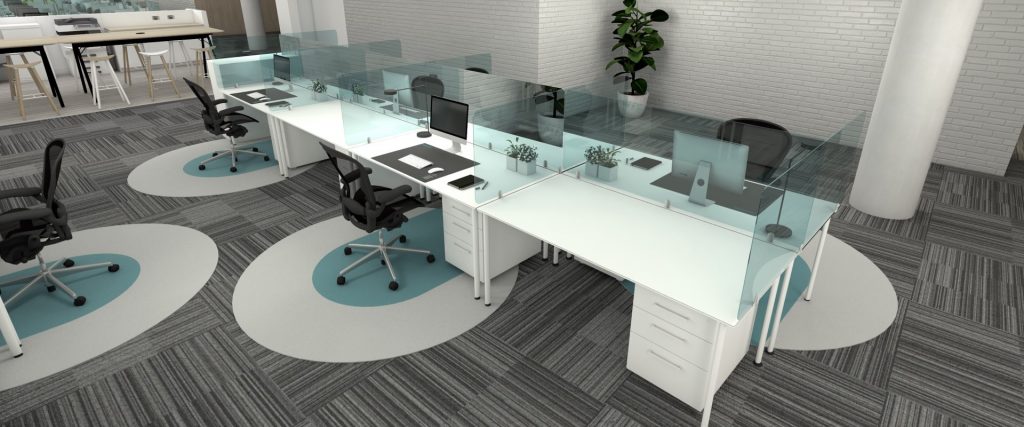
Homeworking will continue, but office life – in some form – will, too. The challenge lies in how to adapt workplaces. Global real estate company Cushman & Wakefield has risen to the challenge with a new design.
It’s called the Six Feet Office. It’s a way of transforming existing offices into places where the six-feet distance rule – which governments may continue to mandate – can be observed.
We predict the current pandemic will radically reshape office furniture.
Office desks have shrunk over the years, from 1.8-metre to 1.6-metre, to now 1.4-metre and less, but we think we’ll see a reversal of that, as people won’t want to sit so close together.
3. Simple solutions
How to keep desks clean? As well as obvious additions such as more hand sanitizer, some deceptively simple changes could help.
For example, in Cushman & Wakefield’s office, employees are asked to grab a paper placemat for their desk. At the end of the day, the paper is thrown away, which could help mitigate COVID-19 spreading on surfaces.
4. Closed plan
Office fashion for decades has included open-plan working. But could COVID-19 reverse this mega-trend, leading to a closed-plan future?
We are not suggesting we all go back to working in 1950s cellular cubicles, but we do think the density in offices will change from open-plan layouts.
5. More signs
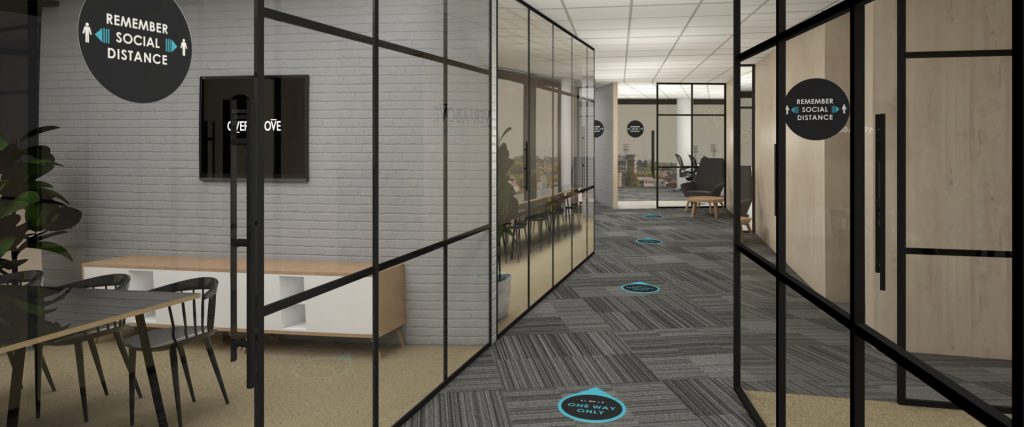
Think road markings, but for offices. From squash-court-style lines in lobbies to standing spots in lifts, and from circles around desks to lanes in corridors, the floors and walls of our offices are likely to be covered in visual instructions.
One possible approach is to encourage employees to walk clockwise, creating one-way flow to minimize transmission, as adopted by many hospitals during the current outbreak.
6. Contactless technology
Companies may also need to invest in a new suite of contactless technologies to reduce disease transmission.
Zaha Hadid Architects’ new headquarters for the Bee’ah waste management company in Sharjah, UAE may be a glimpse of the future. It is packed with what ZHA calls ‘contactless pathways’, whereby employees rarely need to touch the building with their hands. Office doors open automatically using motion sensors and facial recognition, while lifts – and even a coffee – can be ordered from a smartphone.
7. Rebuild
Given the gravity of the situation, some companies may need to get the builders in, either for a retrofit, or a more radical rebuild.
We think we’ll see wider corridors and doorways, more partitions between departments, and a lot more staircases. Everything has been about breaking down barriers between teams, but we don’t think spaces will flow into each other so much any more.
8. Fresh air
With good ventilation being key to preventing the spread of COVID-19, a big trend could be simply opening a window – if windows can be opened, that is, since many offices are now sealed, controlled units.
And where filtered air is the only option, it could be boom-time for high-end office climate control systems.
9. Co-working
In addition to carrying out extra cleaning, make it easy for members to do it themselves, too. Offer cleaning kits such as wipes, sprays and disposable towels, so they can clean their own workstations and any other surfaces before — and after — using them.
Participants also recommend putting sanitiser in all the major foot traffic and crossover areas, such as entrances and exits, elevators, and conference rooms.
10. Greetings
We’ve already glimpsed the future, as many organizations implemented greetings policy changes before office staff were sent home.
Handshakes are out, and look likely to remain so for some time to come. But new greetings have emerged to get us by until we can return the our handshake.
Earlier this year, billboards in Beijing promoted clasping one’s own hands. The UAE and Qatar asked citizens to avoid nose-to-nose greetings, and the French government frowned on greetings with a kiss. Expect more safe-distance greetings to evolve in an office near you soon.
